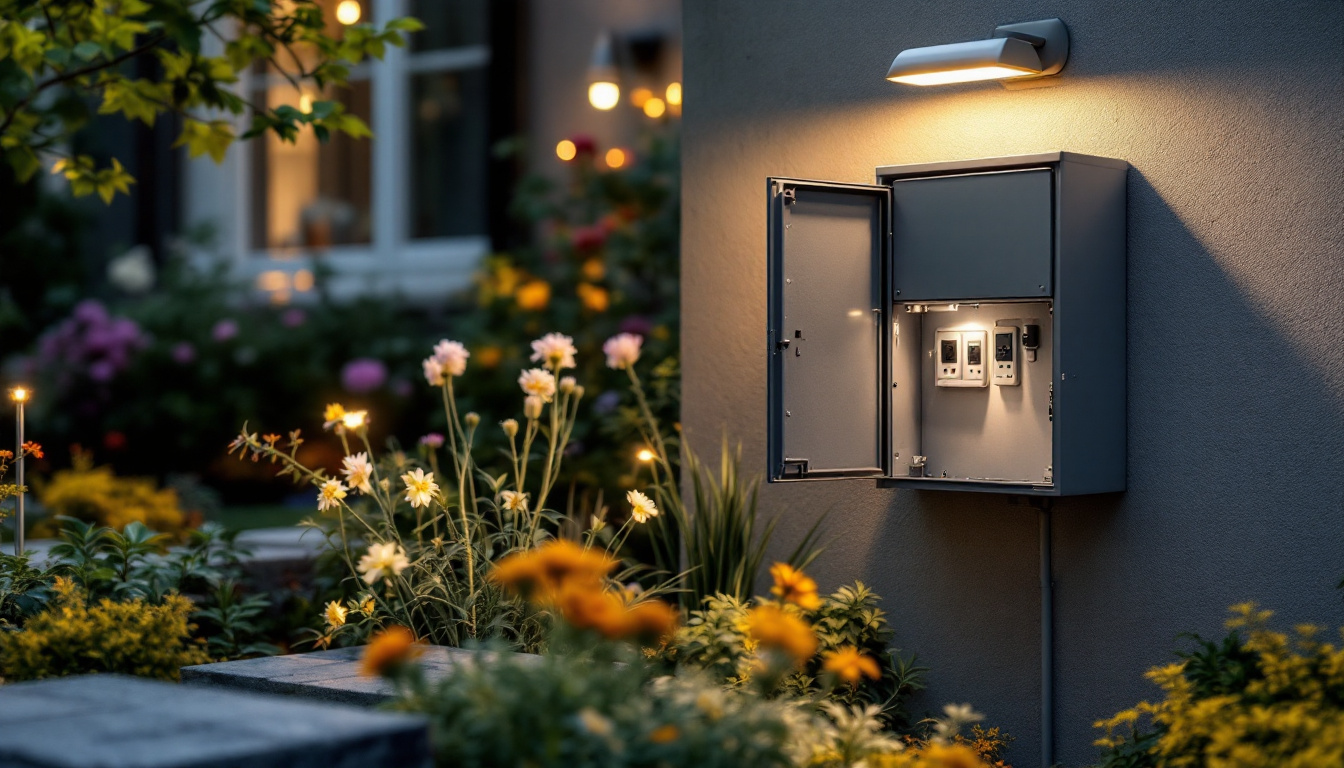
For lighting contractors, the importance of exterior work lights cannot be overstated. These lights play a critical role in ensuring safety, efficiency, and quality in outdoor projects. Whether working on residential properties, commercial buildings, or public spaces, the right lighting can make a significant difference in the outcome of the job. This article delves into the various aspects of exterior work lights and why they are essential for lighting contractors.
Lighting is not merely a functional aspect of any project; it is a vital component that can enhance the overall quality and safety of the work environment. Proper lighting ensures that contractors can see what they are doing, reducing the risk of accidents and improving accuracy. In addition to visibility, the right lighting can also influence the mood and morale of the workforce, creating a more positive atmosphere that can lead to increased motivation and collaboration among team members.
Safety is paramount in any construction or installation project. Poor visibility can lead to accidents, injuries, and costly mistakes. Exterior work lights illuminate the workspace, allowing contractors to navigate safely and effectively. This is especially crucial during nighttime or in low-light conditions, where shadows can obscure hazards. Furthermore, the strategic placement of lighting can highlight potential dangers, such as uneven surfaces or equipment, making it easier for workers to remain vigilant and avoid mishaps.
Moreover, well-lit work areas deter potential intruders and vandalism, protecting both the site and the equipment. By investing in high-quality exterior work lights, contractors can create a safer environment for themselves and their teams. Additionally, proper lighting can enhance communication on-site; when everyone can see clearly, it fosters better coordination and teamwork, ultimately leading to a more efficient workflow and a stronger sense of community among workers.
Efficiency is a key concern for lighting contractors. Time is money, and the ability to work quickly and effectively can significantly impact project timelines and budgets. Adequate lighting allows contractors to maintain a steady workflow, minimizing delays caused by poor visibility. This is particularly important in large-scale projects where multiple teams may be working simultaneously; effective lighting ensures that everyone can perform their tasks without unnecessary interruptions or confusion.
With the right lighting setup, tasks can be completed faster and with greater precision. This not only enhances productivity but also improves the quality of work, leading to higher client satisfaction and potential repeat business. Furthermore, well-lit environments can reduce the likelihood of fatigue, as workers are less likely to strain their eyes in dim conditions. By prioritizing proper lighting, contractors can create a more sustainable work environment that promotes both efficiency and well-being, ultimately benefiting everyone involved in the project.
Understanding the various types of exterior work lights available is crucial for lighting contractors. Each type has its specific applications, advantages, and disadvantages. Knowing which light to use in a given situation can greatly impact the success of a project.
LED work lights have become increasingly popular among contractors due to their energy efficiency and longevity. These lights produce bright illumination while consuming less power, making them a cost-effective choice for extended use. Additionally, LED lights are durable and resistant to shocks, which is ideal for outdoor environments.
Another advantage of LED work lights is their versatility. They come in various sizes and designs, from portable units to larger fixed installations. This flexibility allows contractors to choose the best option for their specific needs. Furthermore, many LED work lights now come equipped with features such as adjustable brightness levels and color temperature settings, allowing users to customize the lighting to suit different tasks and preferences. This adaptability not only enhances the working environment but can also improve the quality of the work being performed, as proper lighting is critical for accuracy and detail.
Halogen work lights are known for their bright, white light output, which closely resembles natural daylight. This quality makes them an excellent choice for tasks that require precise color matching, such as painting or finishing work. However, halogen lights tend to generate more heat and consume more energy compared to LEDs.
While halogen lights can provide excellent illumination, contractors should be cautious about their placement to avoid overheating and potential fire hazards. Proper ventilation and distance from flammable materials are essential considerations when using halogen work lights. Additionally, halogen work lights often have a shorter lifespan than their LED counterparts, which can lead to increased replacement costs over time. Despite this, their ability to produce a high lumen output makes them a go-to choice for many contractors who need reliable lighting for demanding tasks, especially in situations where immediate, bright light is necessary.
Fluorescent work lights offer another alternative for contractors. They are energy-efficient and provide a broad spread of light, making them suitable for larger work areas. However, they may not be as portable as LED or halogen options and can be more fragile due to their glass tubes.
Fluorescent lights are often used in temporary installations, such as construction sites or events, where a quick setup is required. Despite their advantages, contractors should be mindful of the potential for flickering and the need for ballast, which can complicate their use. Moreover, advancements in fluorescent technology have led to the development of more robust options, such as compact fluorescent lights (CFLs) that offer improved durability and energy savings. These newer models can provide a more stable light output and are often designed to be less susceptible to breakage, making them a viable choice for contractors looking for reliable lighting solutions that can withstand the rigors of outdoor work environments.
When selecting exterior work lights, several key features should be taken into account. These features can significantly influence the effectiveness and usability of the lighting setup.
The brightness of a work light is measured in lumens, and it is essential to choose lights with adequate lumens for the specific tasks at hand. Higher lumens provide brighter light, which can enhance visibility in darker conditions. However, it is important to strike a balance; excessively bright lights can create glare and discomfort.
Contractors should assess the work environment and choose lights that provide sufficient illumination without causing strain on the eyes. This consideration is particularly important when working for extended periods. For instance, in situations where fine detail work is required, such as electrical installations or intricate repairs, a softer, diffused light may be more beneficial to reduce eye fatigue while still providing adequate visibility.
Portability is another crucial factor for lighting contractors. Many projects require mobility, and having lightweight, easy-to-transport work lights can save time and effort. Look for models that come with handles, stands, or hooks for easy setup and adjustment.
Quick setup features, such as collapsible designs or integrated tripods, can also enhance efficiency. The ability to reposition lights easily allows contractors to adapt to changing work conditions and optimize their lighting setup. Furthermore, some advanced models may include battery-operated options, eliminating the need for cumbersome extension cords and allowing for greater flexibility in placement, especially in remote or hard-to-reach areas.
Exterior work lights must withstand various weather conditions, including rain, snow, and extreme temperatures. Choosing lights with durable materials and weather-resistant ratings ensures they can perform reliably in outdoor environments.
Additionally, rugged designs can help prevent damage from accidental drops or impacts, which is especially important on busy job sites. Investing in high-quality, durable lights can reduce the need for frequent replacements and repairs, ultimately saving costs in the long run. Some models even feature reinforced casings and shatterproof lenses, providing an extra layer of protection against harsh conditions. This durability not only enhances the lifespan of the lights but also contributes to safety on the job site, as reliable lighting is crucial for preventing accidents and ensuring that all workers can navigate the area safely, regardless of the time of day or weather conditions.
To maximize the effectiveness of exterior work lights, contractors should adhere to best practices when setting them up and using them. These practices can enhance safety, efficiency, and overall project quality.
The placement of work lights is critical for achieving optimal illumination. Lights should be positioned to minimize shadows and eliminate dark spots in the workspace. This may require experimenting with different angles and heights to find the best configuration.
Contractors should also consider the workflow of the project when placing lights. Ensuring that the most critical areas are well-lit can enhance productivity and safety, allowing workers to focus on their tasks without distraction.
Regular maintenance of exterior work lights is essential for ensuring their longevity and reliability. This includes checking for any damage, replacing bulbs as needed, and cleaning lenses to maintain brightness. A well-maintained lighting setup can prevent unexpected failures and ensure consistent performance throughout the project.
Contractors should also keep an eye on power sources and cords, ensuring they are in good condition and free from frays or damage. Proper storage and handling of lights when not in use can further extend their lifespan.
Exterior work lights are an indispensable tool for lighting contractors, providing safety, efficiency, and quality in outdoor projects. Understanding the different types of lights available, their features, and best practices for use can significantly enhance the success of any job.
By investing in high-quality exterior work lights and following best practices, contractors can create a safer and more productive work environment. Ultimately, the right lighting can lead to higher client satisfaction and a stronger reputation in the competitive landscape of lighting contracting.
Ready to elevate your outdoor projects with superior lighting solutions? Look no further than LumenWholesale, where we provide lighting contractors with top-quality, spec-grade exterior work lights at unbeatable wholesale prices. Our extensive selection is designed to meet the highest industry standards, ensuring you get the most reliable and high-performance lighting for every project. Plus, with free shipping on bulk orders, you can enjoy premium lighting at the best value — without hidden fees or compromises. Don’t let inadequate lighting hinder your work. Discover the perfect blend of quality, affordability, and convenience at LumenWholesale today.

Discover innovative cost-saving strategies for lighting contractors using exterior solar spot lights.

Discover how wire-to-wire connectors are revolutionizing the lighting industry by enhancing efficiency and reliability for contractors.

Discover why an outdoor electric box is essential for any lighting project.

Discover the frequent pitfalls lighting contractors face with standard bulbs and learn how to avoid them.